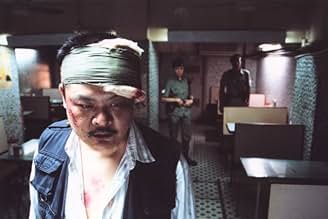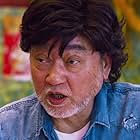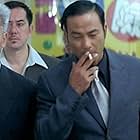I'm convinced that much of film is reverberation from the phenomenon of noir. The key element of noir was a capricious fate that both played arbitrary havoc with lives and flavored the eye of the camera.
I am not thoroughly steeped in Hong Kong work, but there seem to be three main communities: the deeply cinematic experimentalists led by Kar-wai, the stylistic ballet of Woo and company and the neo-noirists. Unfortunately, these can superficially appear similar in many respects. But I think here we have a clear case of the third.
The game is dark. Everyone seems to think they are in charge, but no one is. Luck plays the key role and many coincidences appear. The camera eye is based on the long lens.
I'm beginning to appreciate cinematographers who exploit either the long or short lens. I think it is impossible to do noir with a short lens because it is so obvious that the eye is within the space of action. But few noir films go so far, so long as this one.
Forget the story, which is only to convey the accidents and lack of control (except for the central scene where one character tries to get another to rub a tattoo off his neck). And forget the characters; they are just tokens borrowed from other movies. Just revel in the philosophy here: why does a world exist where everything is a matter of chance, but you as the viewer always, always happen to be in the right place to see everything?
Ted's Evaluation -- 2 of 3: Has some interesting elements.

































